Tom's Guide Verdict
Need a back-up Internet plan or just online access anywhere you go? Netgear’s Nighthawk M6 Mobile Hotspot Router can deliver the data, but its performance is limited by which part of a 5G network it can tap into.
Pros
- +
Antenna ports
- +
Easy setup and configuration
- +
5G mobile hotspot with Wi-Fi 6
- +
Works with AT&T and T-Mobile
Cons
- -
Expensive
- -
Big and heavy
- -
Only uses sub-6 5G frequencies
Why you can trust Tom's Guide
Wi-Fi Spec: AX3600
Mobile Data Spec: LTE and 5G
Ports: Two external antenna ports, 1Gbps LAN, nano-SIM
Wi-Fi chip: Qualcomm SnapDragon X62
Peak performance: 512.7Mbps
Range: 30-feet
Size: 4.1 x 4.1 x 0.8 inches
Estimated Annual Electricity Cost: $1.50
It may be bigger and heavier than its peers but Netgear’s Nighthawk M6 Mobile Hotspot is not only a snap to set up and use but can get you online anywhere there’s a 4G or 5G phone signal. It works just as well on the road as at home to ensure a 24/7 internet connection and is also the rare hotspot that can be outfitted with external antennas to grab a weak signal. The M6 hotspot combines access to the mobile data network and Wi-Fi 6 transmissions for top speeds but relies on the Sub-6 portion of the 5G spectrum, limiting its top speed.
All in all, this mobile hotspot can deliver the data, wherever you may be but its $800 price tag may be a lot to swallow. Our Netgear Nighthawk M6 Mobile Hotspot review will help you decide if this is the best mobile hotspot for your needs or if you’d be better off with a different device.
Netgear Nighthawk M6 Mobile Hotspot: Pricing and availability
The Nighthawk M6 Mobile Hotspot Router, aka MR6150, is available in unlocked form for $800 on Netgear’s website as well as from AT&T for $310. Able to cover roughly 2,000 square feet, it should be plenty for most homes and more than enough for a connected camping trip or day at the beach.
Netgear Nighthawk M6 Mobile Hotspot review: Design
A dead ringer for Netgear’s previous generation M5 mobile hotspot (aka MR5200), the MR6150 Nighthawk M6 Mobile Hotspot is the same size (4.1 x 4.1 x 0.8 inches) and weight (8.8 ounces with its battery). In fact, the easiest way to tell the two apart is that the newer M6 has gray edging while the older M5 is all black.
It looks large next to the 4.9- x 3.1- x 0.7-inch T-Mobile 5G Hotspot, which weighs in at 7.6 ounces. Even with the weight disparity, the 5G Hotspot has a larger 6,460 milliamp hour (mAh) battery pack versus the M6’s 5,040 mah battery.
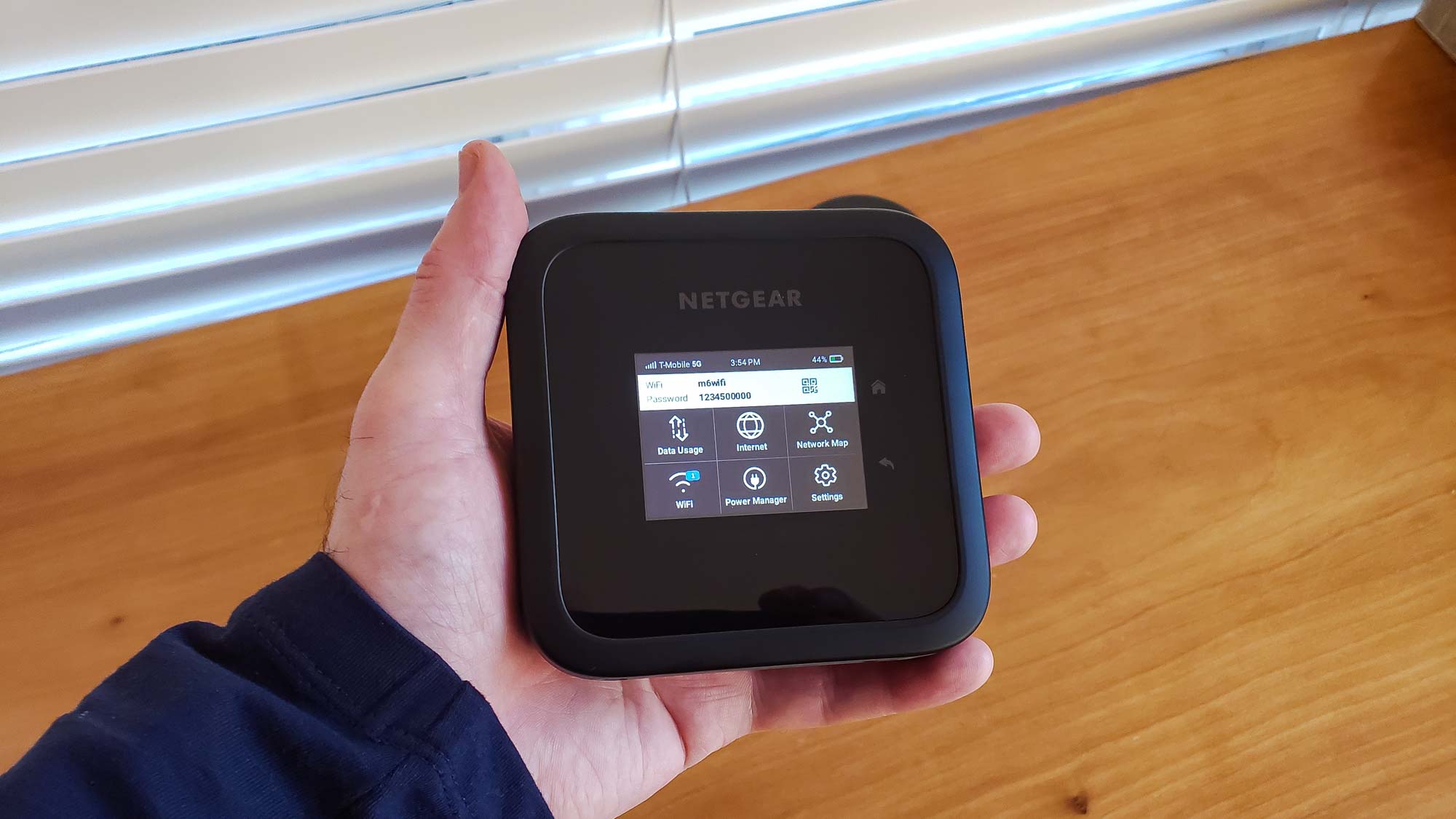
The center of attention for the M6 is its 2.4-inch display that is not only touch-sensitive but all you need to set up and use the hotspot. However, there’s also a way to use a connected browser to adjust and configure its settings. The M6’s screen not only allows configuring a guest network and seeing what’s connected but it even let me only use 5GHz transmissions to save power. It can also work as a dual-band hotspot.
It comes ready to get online with an AC adapter, power cord and battery. Under the hood, the M6 works as a data modem that brings in streams from the mobile data network and sends the data out as dual band Wi-Fi 6 transmissions. Powered by Qualcomm’s SnapDragon X62 chip, it can tap into the most popular 12 5G bands and 18 LTE bands in the Sub-6 spectrum between 600MHz to 3.7Ghz.
This limits it to roughly 4G speeds and the device is unable to tap into higher-performing mid-band and millimeter wave frequencies that could have pushed its speeds higher. By contrast, the Inseego MiFi M2100 5GUW can use Verizon’s ultra-wideband towers that operate between 28- and 39GHz for top speeds; the MiFi M2100 5G UW costs $400.
At the moment, it’s been tested and certified for the AT&T and T-Mobile networks. It continues to undergo tests on Verizon’s network.
On the Wi-Fi end, the M6 is a miniaturized Wi-Fi 6 router that uses 2X2 streams for both the 5GHz and 2.4GHz bands and can handle up to 32 devices at once, topping out at a theoretical 3.6Gbps of throughput. The hotspot lacks the 6GHz band that Wi-Fi 6E adds but should be more than enough for most uses at home, at work and on the road.
There’s a special high-performance mode that kicked in when I removed the M6’s battery pack and plugged it in. Netgear estimates that by using AC power, the router can push 40% farther than on battery power. More on that later.
Inside, the device has four internal antennas for grabbing data out of thin air and retransmitting it as a Wi-Fi signal. If that’s not enough, it has a pair of TS-9 RF ports for plugging in external antennas that might prove handy at home or in a recreational vehicle. Netgear sells an omnidirectional patch antenna for $55.
Like the M5, the M6 has the bare minimum of ports. In addition to a gigabit Ethernet port, the hotspot has a USB-C power connector that isn’t for moving data. It did, however, come in handy to use the M6’s battery to charge my phone in an emergency.
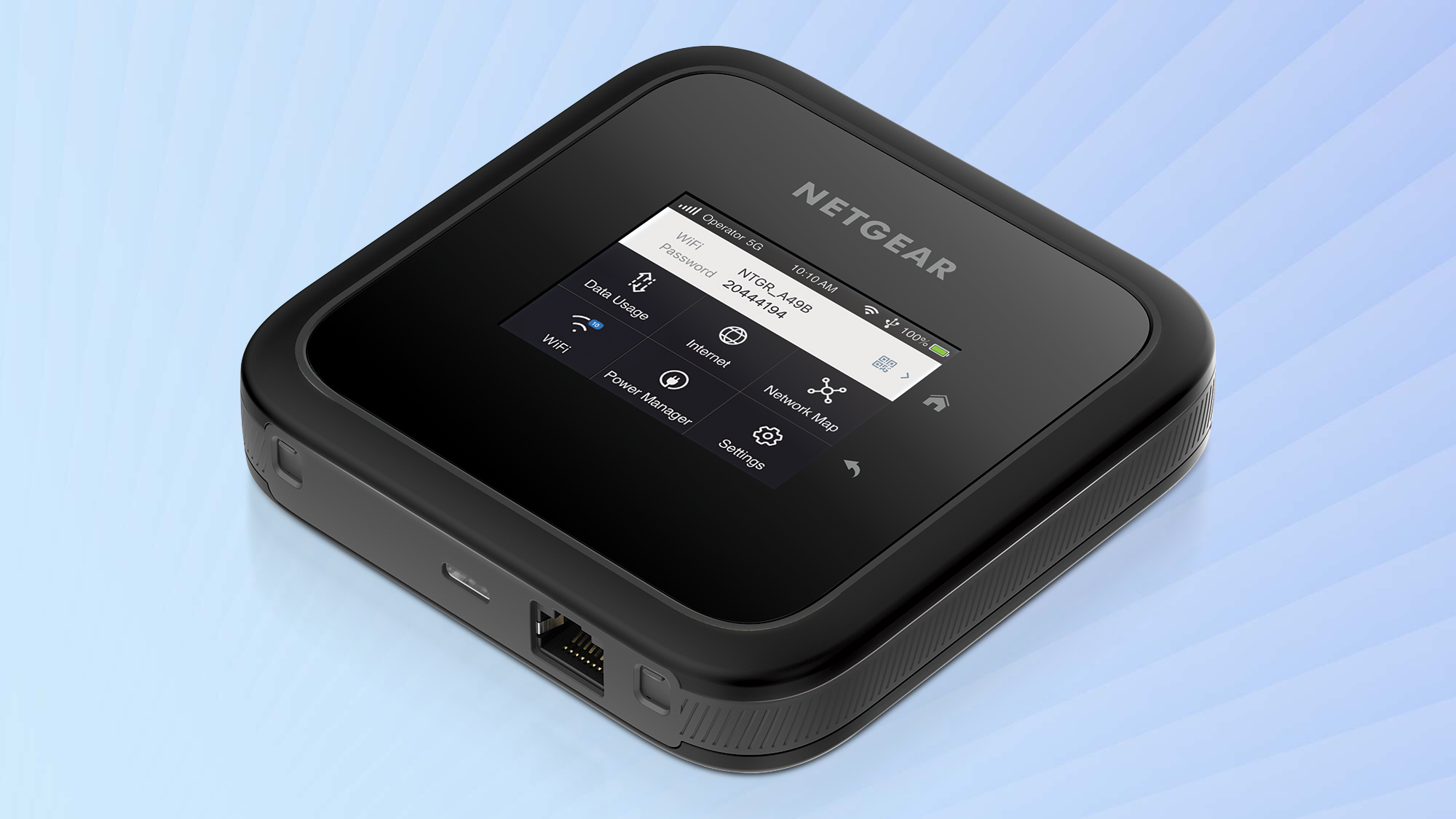
The M6 can fulfill several roles. In addition to being used as a traditional hotspot for getting online anywhere with LTE or 5G, the M6 can be used as a home’s primary broadband source or as an emergency fail-over device when your wired network goes down. Unlike modem-routers that use AC power, such as Netgear’s Orbi NBK752, the M6 has enough battery power for at least eight hours of off-grid data to get through a moderate power failure.
Netgear Nighthawk M6 Mobile Hotspot review: Performance
Small and easily pocketable, the M6 can go anywhere with you to provide instant internet anywhere there’s a signal. Real-world connection speeds depend on how close you are to the transmitting tower, what standard (5G or LTE) is being used and the local congestion of the carrier’s network.
To start, I ran several tests in New York, New Jersey and Connecticut to gauge the M6’s potential using my Samsung Galaxy Book Pro notebook and Ookla’s SpeedTest.net speed testing app. Using T-Mobile’s 5G network I got connections ranging from downloads of 107Kbps to 512.7Mbps. At my suburban NYC office, I got an average download rate of 133.7Mbps, well off the 200Mbps that my wired broadband provides but plenty to keep me in business. By contrast, using my Samsung Galaxy S9 phone as a hotspot yielded 127.5Mbps of bandwidth. That said, at two other locations in New Jersey and Connecticut, the results improved to 241.9Mbps and 178.0Mbps.
In all three locations, I was able to listen to music and watch online videos without a problem. On the other hand, the latency averaged 25 milliseconds, more than double what a wired connection might provide. Most won’t notice this, but a gamer might.
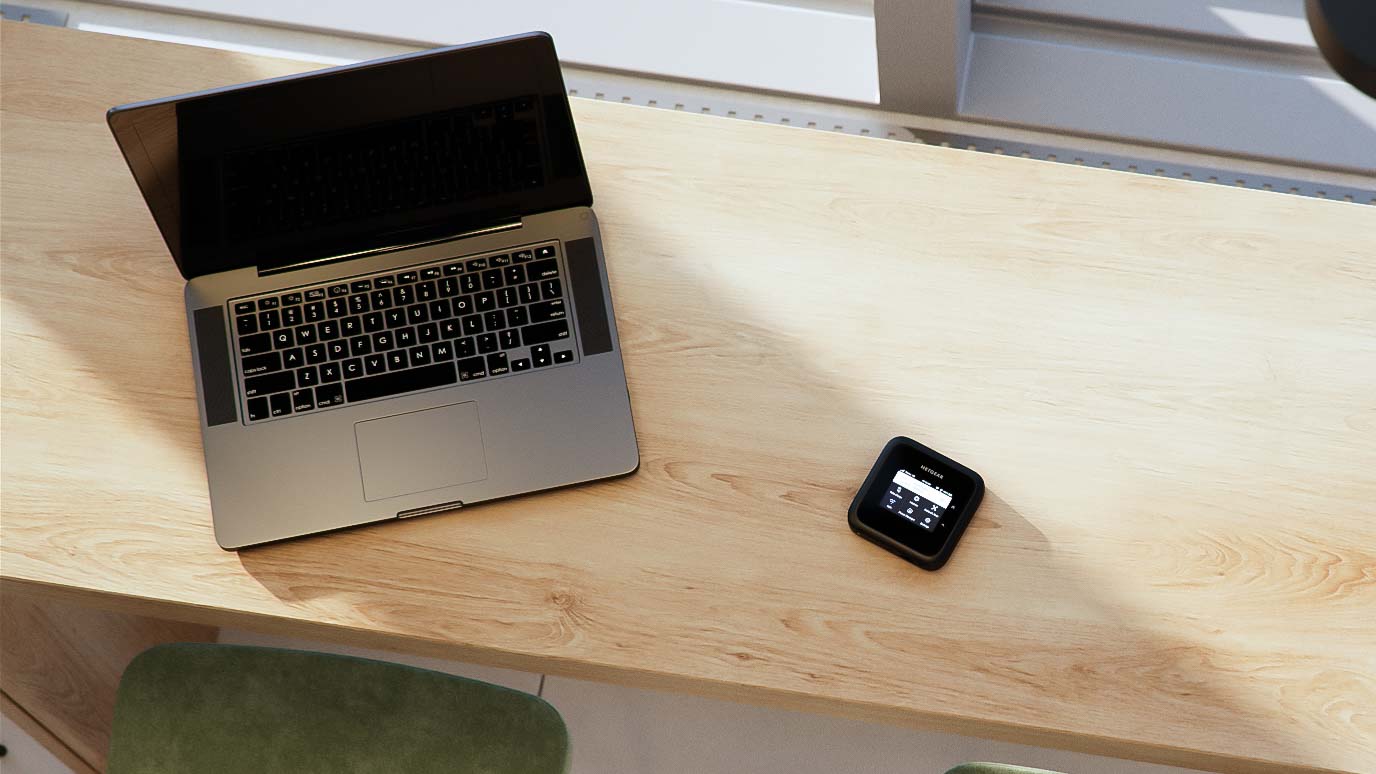
On battery power, the hotspot and notebook stayed connected for 30 feet, plenty for servicing a room, RV or picnic table. When I removed the battery and plugged it into an AC outlet, its reach improved to 40 feet, a 33% increase in range.
The device’s 5,040mah battery pack powered the M6 for 8 hours and 15 minutes of on-and off use with the Power Manger set to Balanced. During two weeks of daily use, the device never got more than warm to the touch. A power miser, the M6 used 2.2 watts to charge and run the device. If it’s charging half of the time and running on battery for the rest, the device should add up to an annual power bill of just $1.50 if you pay the national average of 15 cents per kilowatt hour.
Netgear Nighthawk M6 Mobile Hotspot review: Setup
It’s a snap to set up the M6 hotspot and it took me about 5 minutes, including a firmware update for the device. It started with me installing the battery and my T-Mobile nano-SIM card.
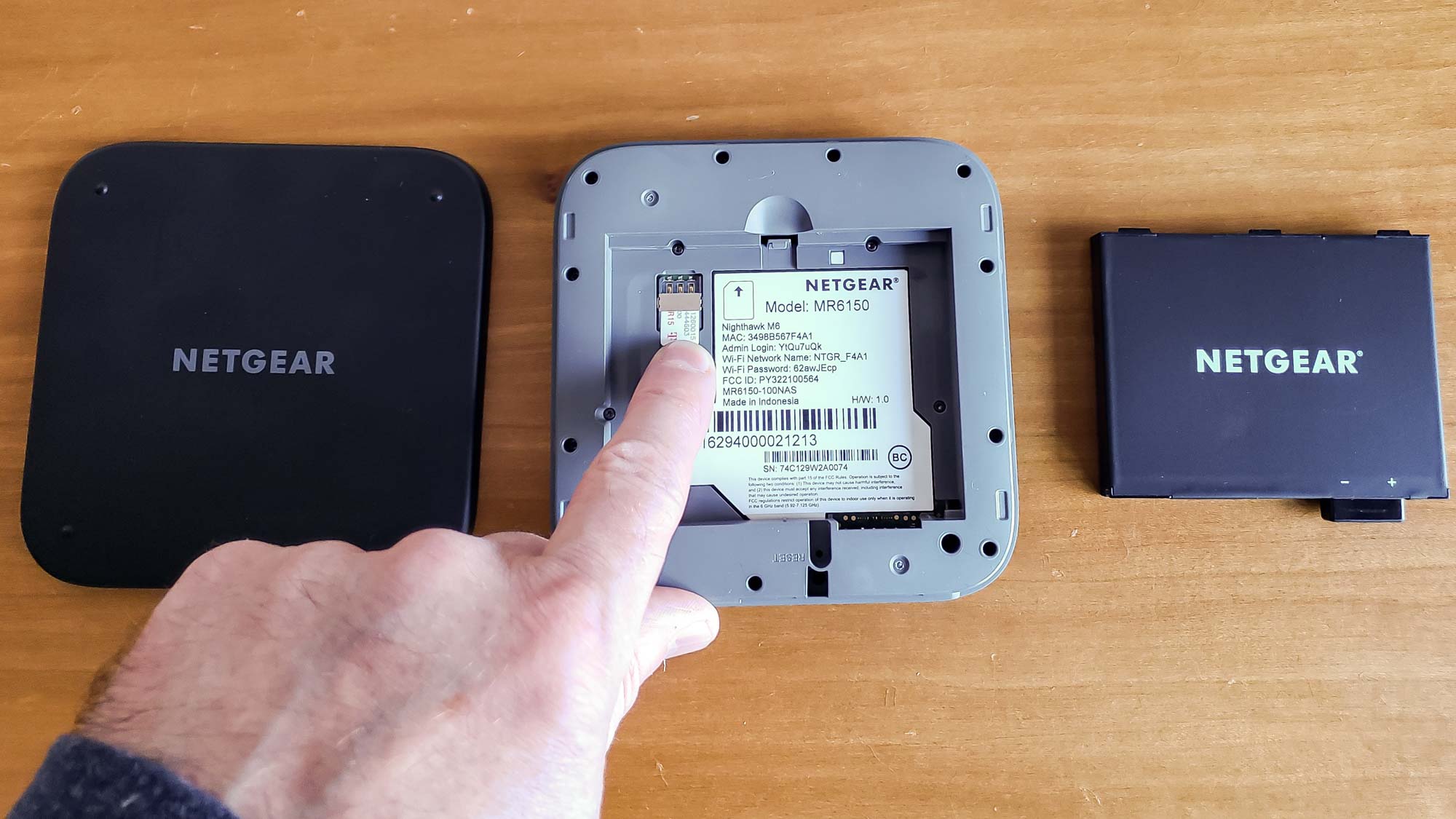
Then, I snapped a picture of the QR code that’s on a plastic screen overlay. It provided clear and simple instructions that started with tapping “Let’s go” on the unit’s screen.
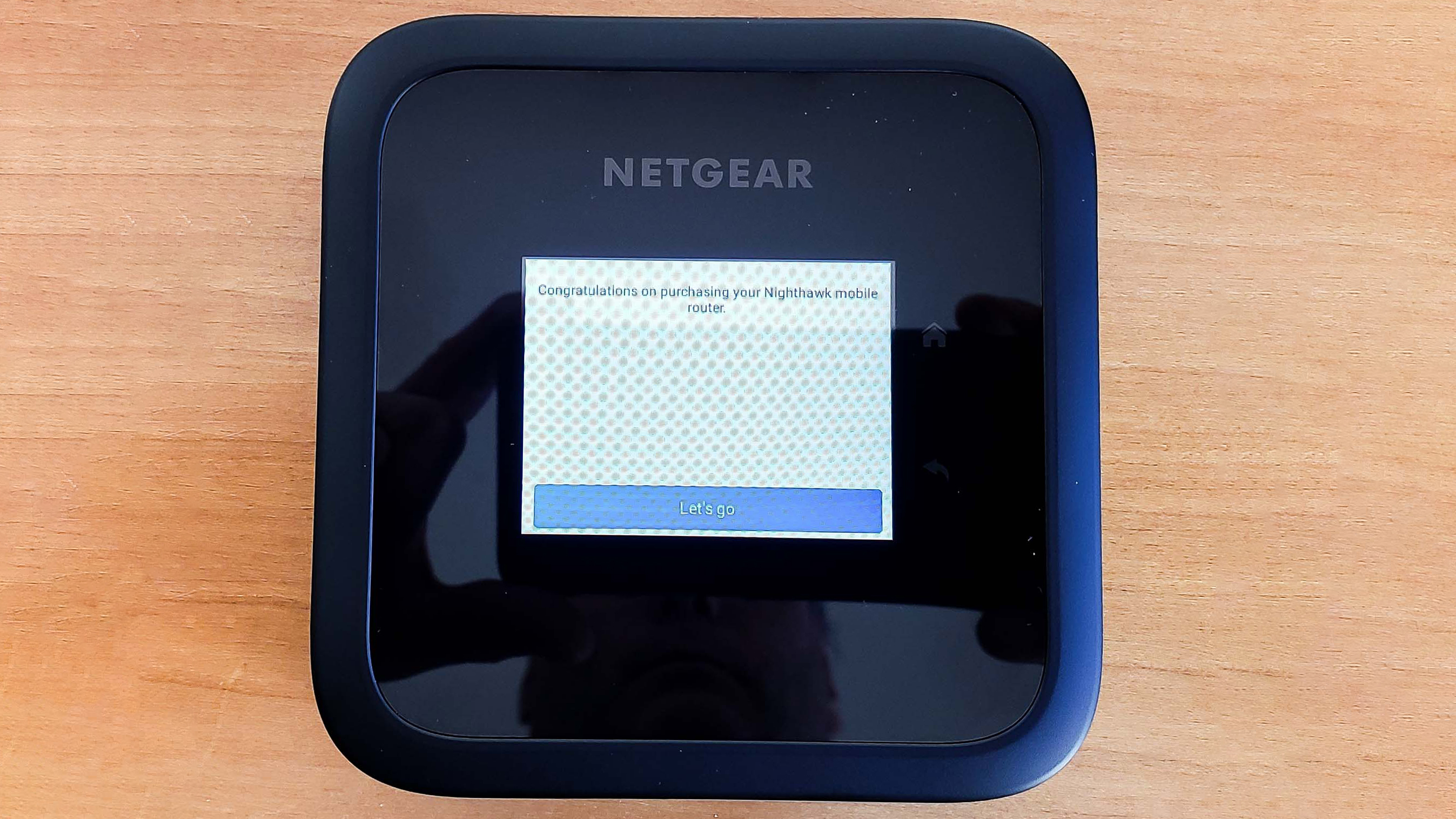
Next, I added a network name and password, followed by entering an administrator’s code for making changes to the M6.
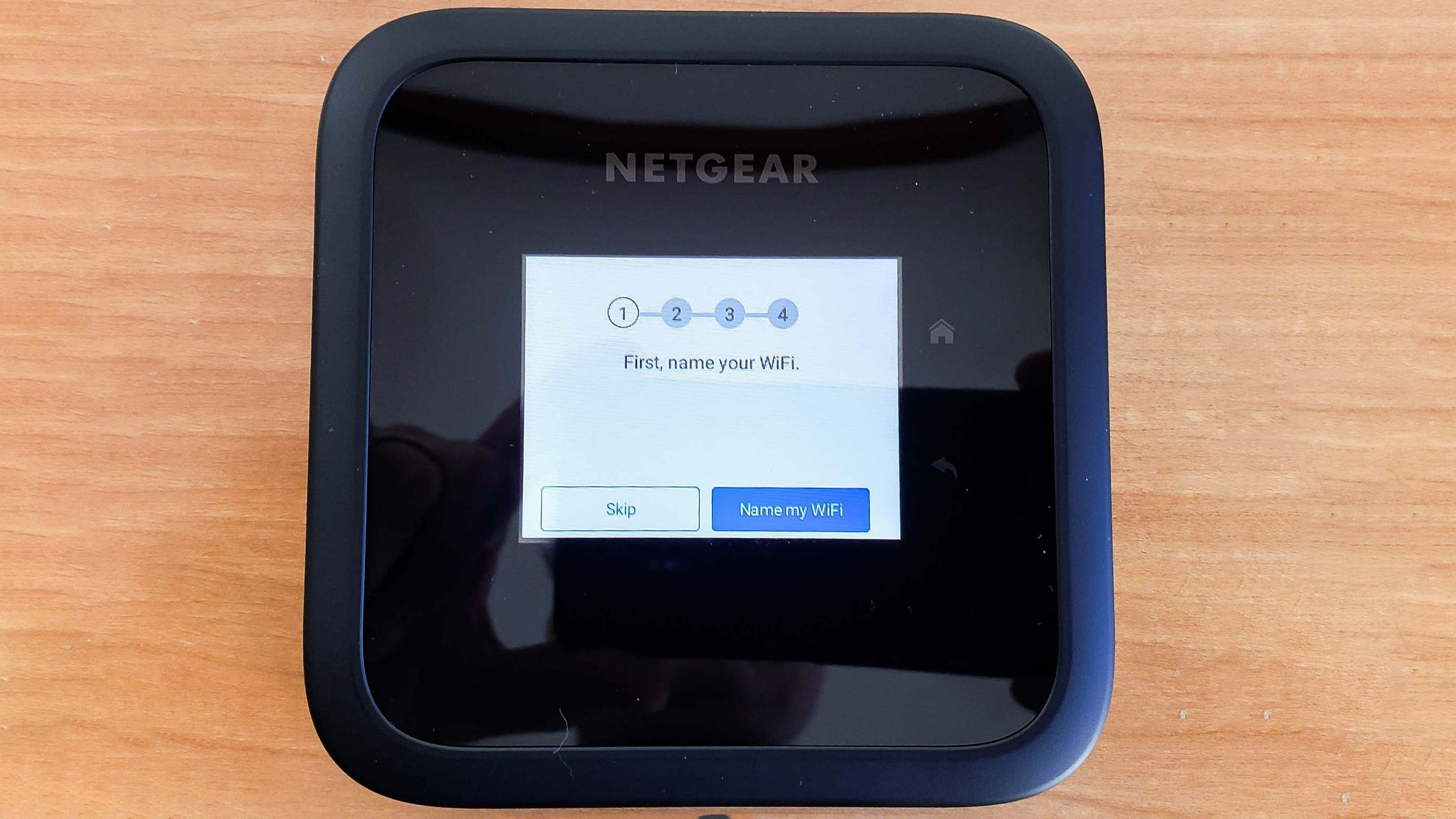
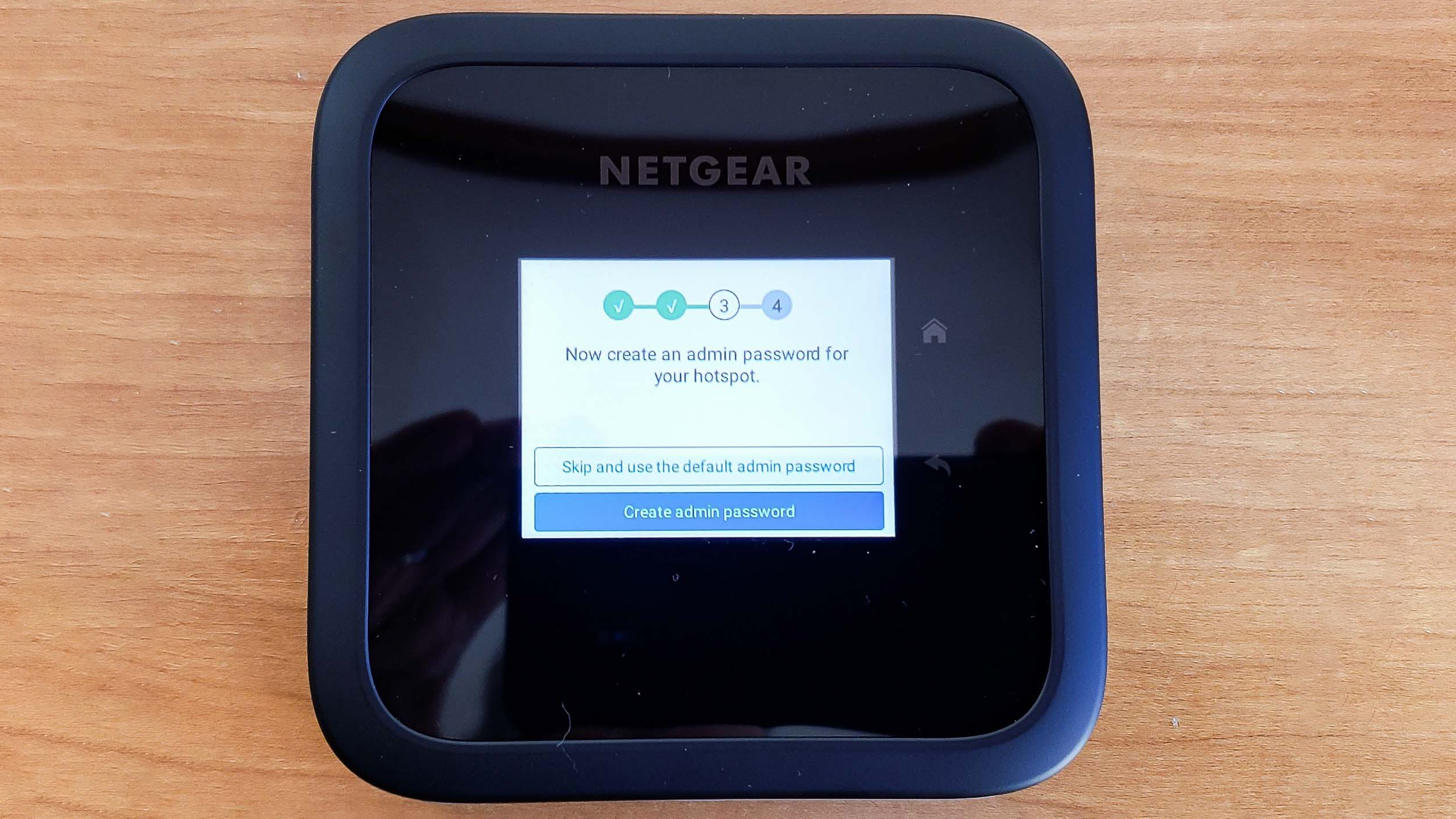
Finally, I set the hotspot to go to sleep after 10 minutes of inactivity and saved the changes.
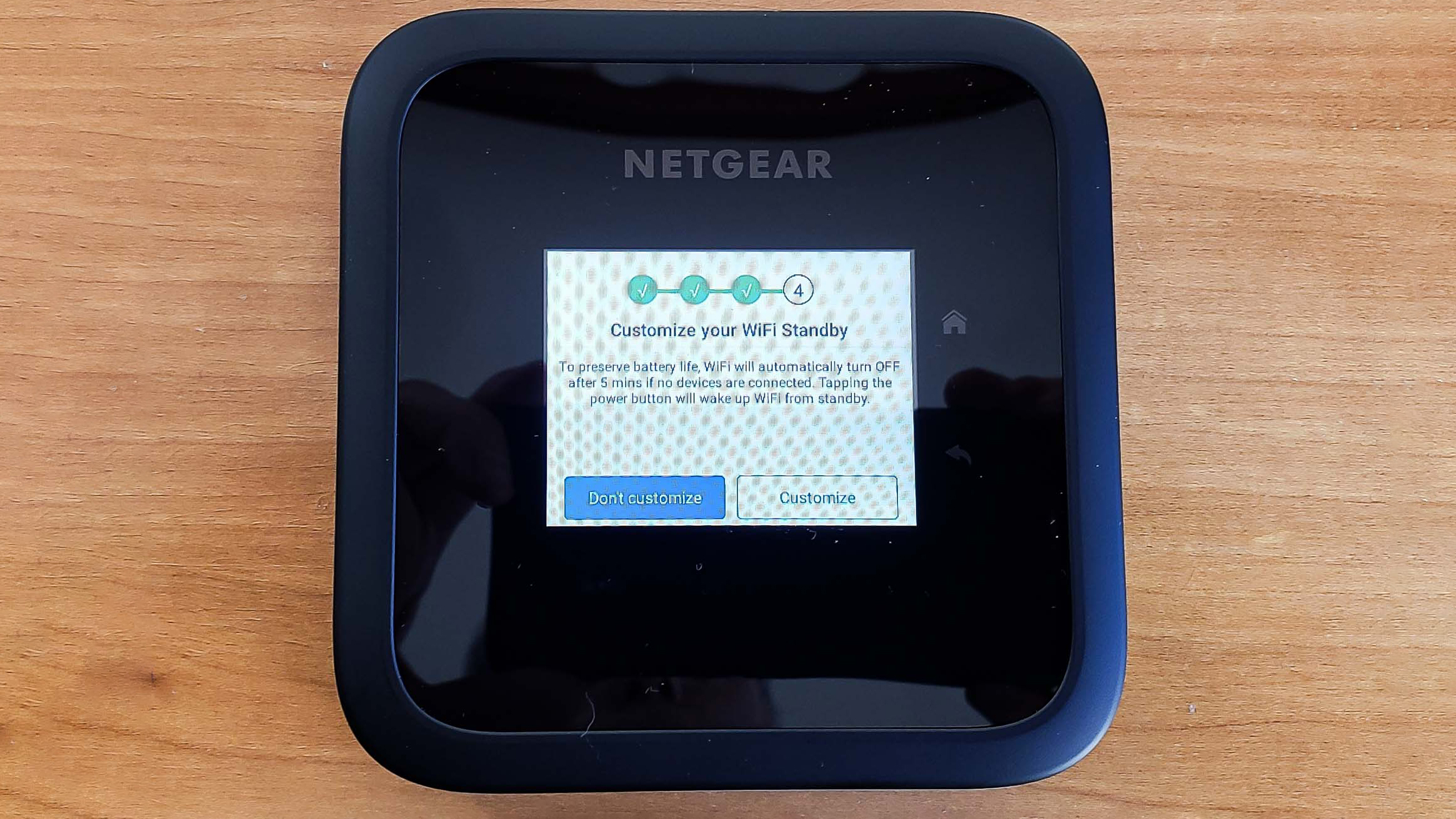
Netgear Nighthawk M6 Mobile Hotspot review: Configuration
There are two ways to configure the M6: using its built-in touch-screen and its Web Admin Portal through a connected browser. The first is quick, easy and always available while the latter offers more choices.
The M6’s screen has dedicated Home and Back buttons while the display shows the network’s name and password (not always a good idea if you’re out and about). I suggest turning on the Screen Lock that requires a password.
On top of a signal strength meter, the M6 has a battery level gauge at the top with boxes for Data Usage, Internet, Network Map, WiFi and Power Management below. The Settings can invoke Airplane Mode, change the security level and mobile data settings. There’s also a place to adjust the screen brightness and time-out for when it goes blank.
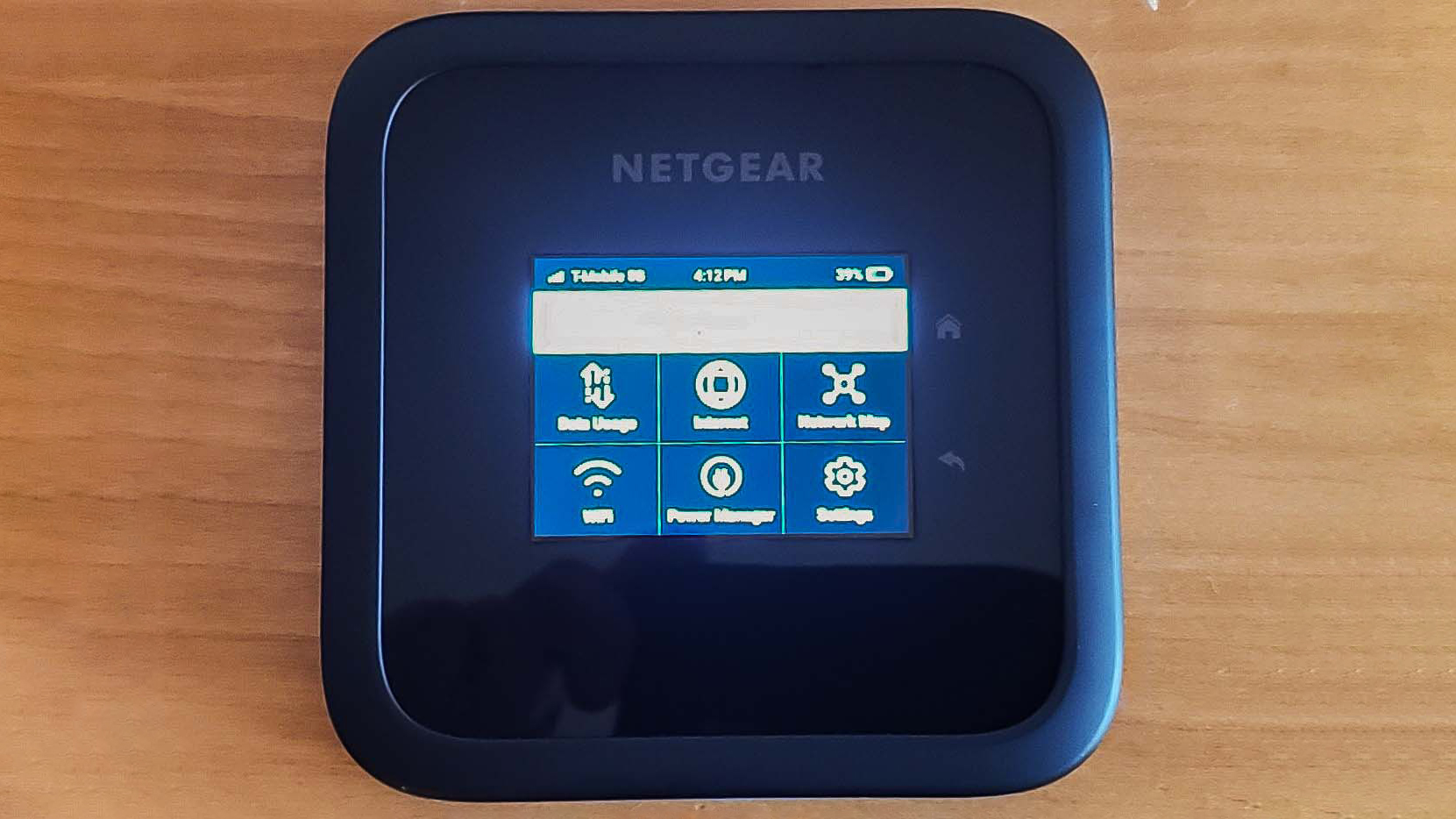
Since it is a mobile phone at heart, the M6 can receive SMS texts. Unfortunately, there’s no way to reply, although they can be deleted. The most intriguing part is the More category that has a slew of configuration options that include turning the Ethernet port on or off and resetting the device.
By contrast, the Web Admin Portal needs a connected computer and can be opened by typing 192.168.1.1 or “mywebui.net” into a browser’s address bar. After entering the administrator password, the device’s Dashboard showed the M6’s connections, a network map and Wi-Fi network details.
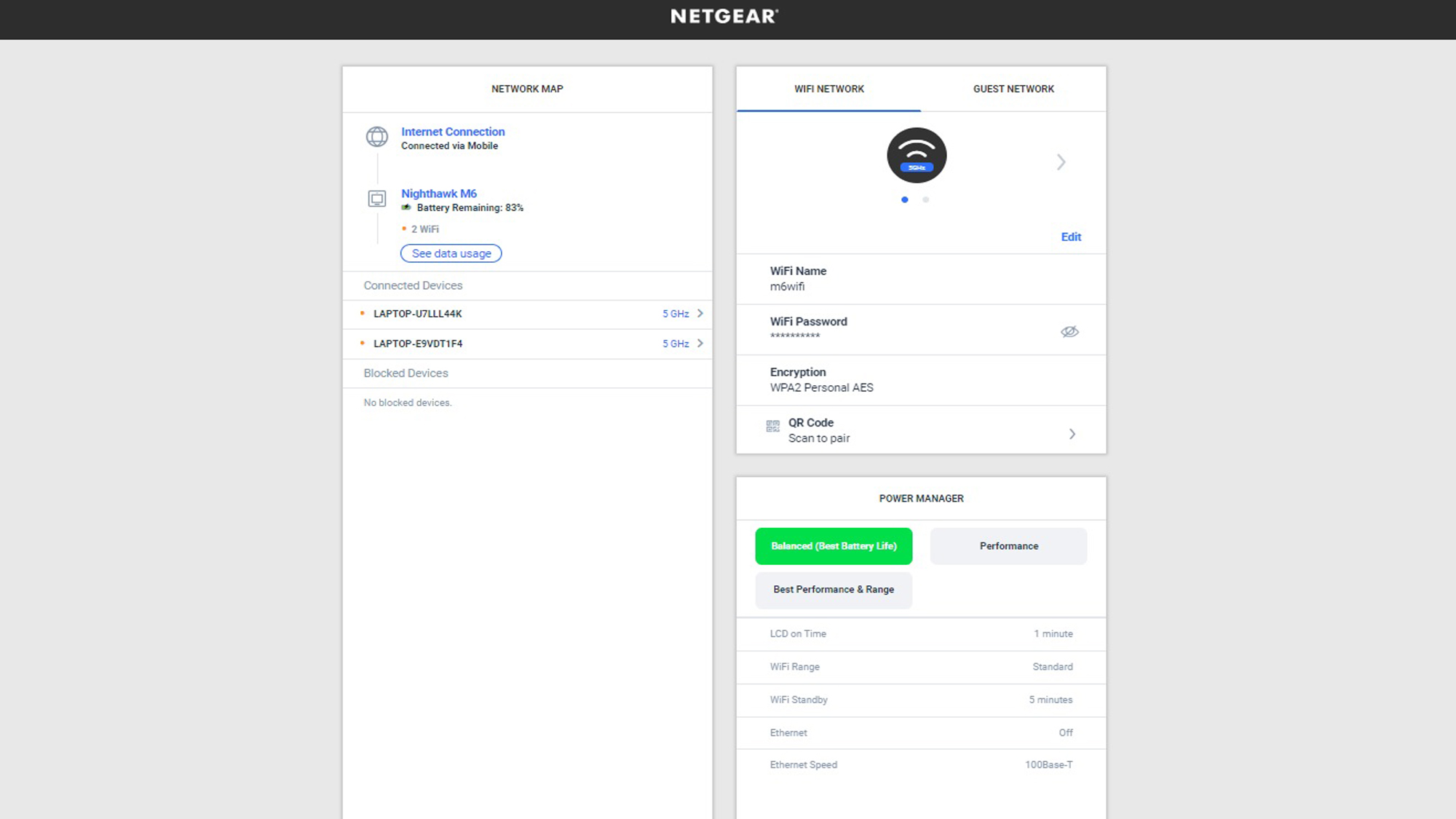
The Settings’ Internet Connection is for customizing the M6. In addition to getting mobile data, it has settings for WiFi Offloading for using the M6 as a primary internet source and Ethernet Offloading for using the device for backup for when your internet connection fails.
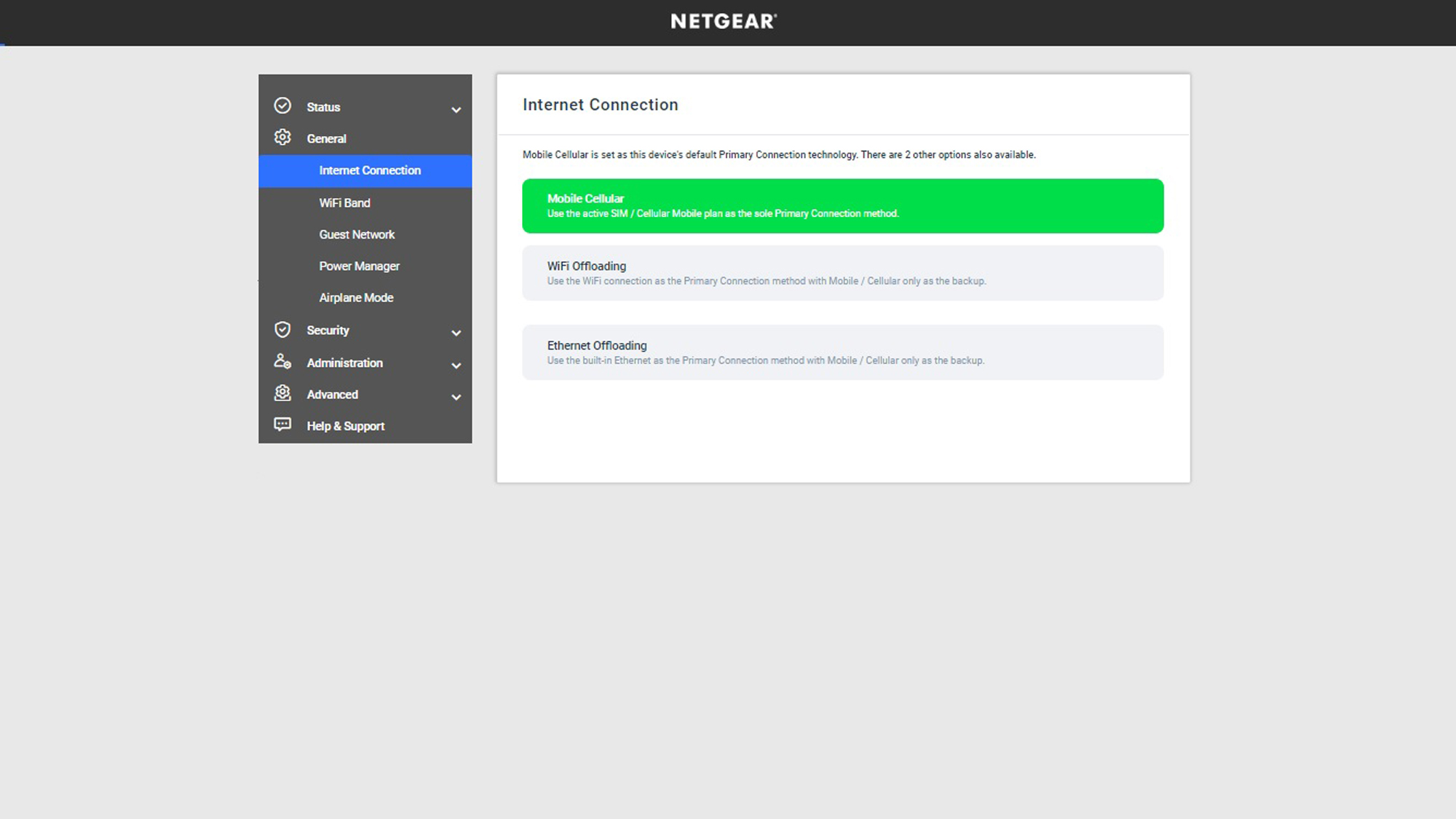
Its Power Management section offers the choice of best performance, best battery performance or best performance and range. The current mode’s details are listed below. Dig a little deeper and the Advanced section has several security options, including Port Forwarding, Port Filtering and setting up a DMZ.
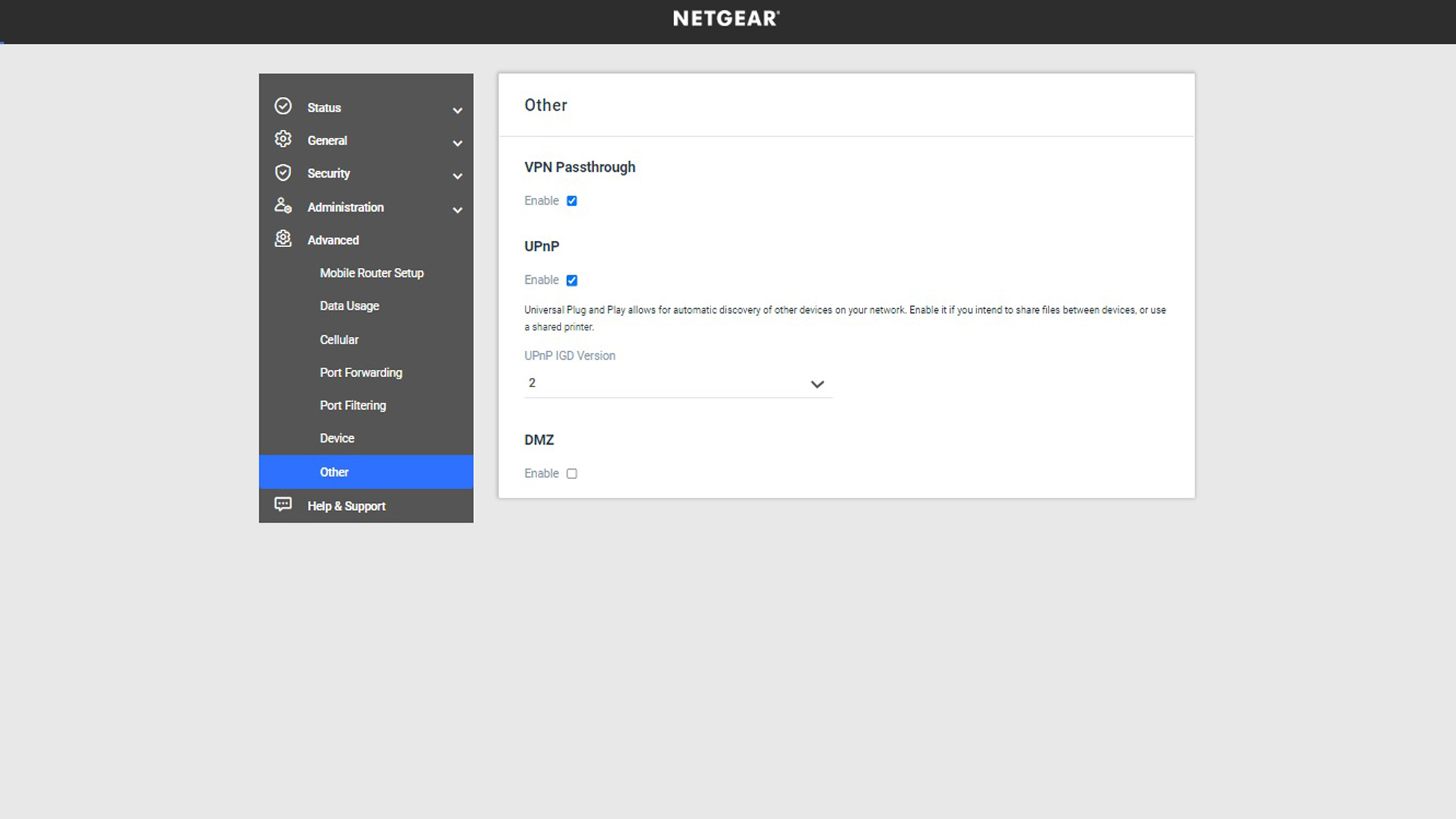
Unlike other Netgear devices, the M6 comes without the company’s Armor security add-on that is built around Bitdefender Total Security to help protect the router and connected devices from malware and hackers. On the other hand, you don’t have to choose between letting the subscription expire or paying $100 annually to keep it active.
The M6 comes with a one-year warranty and 90-days of support, which should be enough to get the device working properly. Upping the coverage to two years with accident protection and overnight replacement adds $50 to the tab.
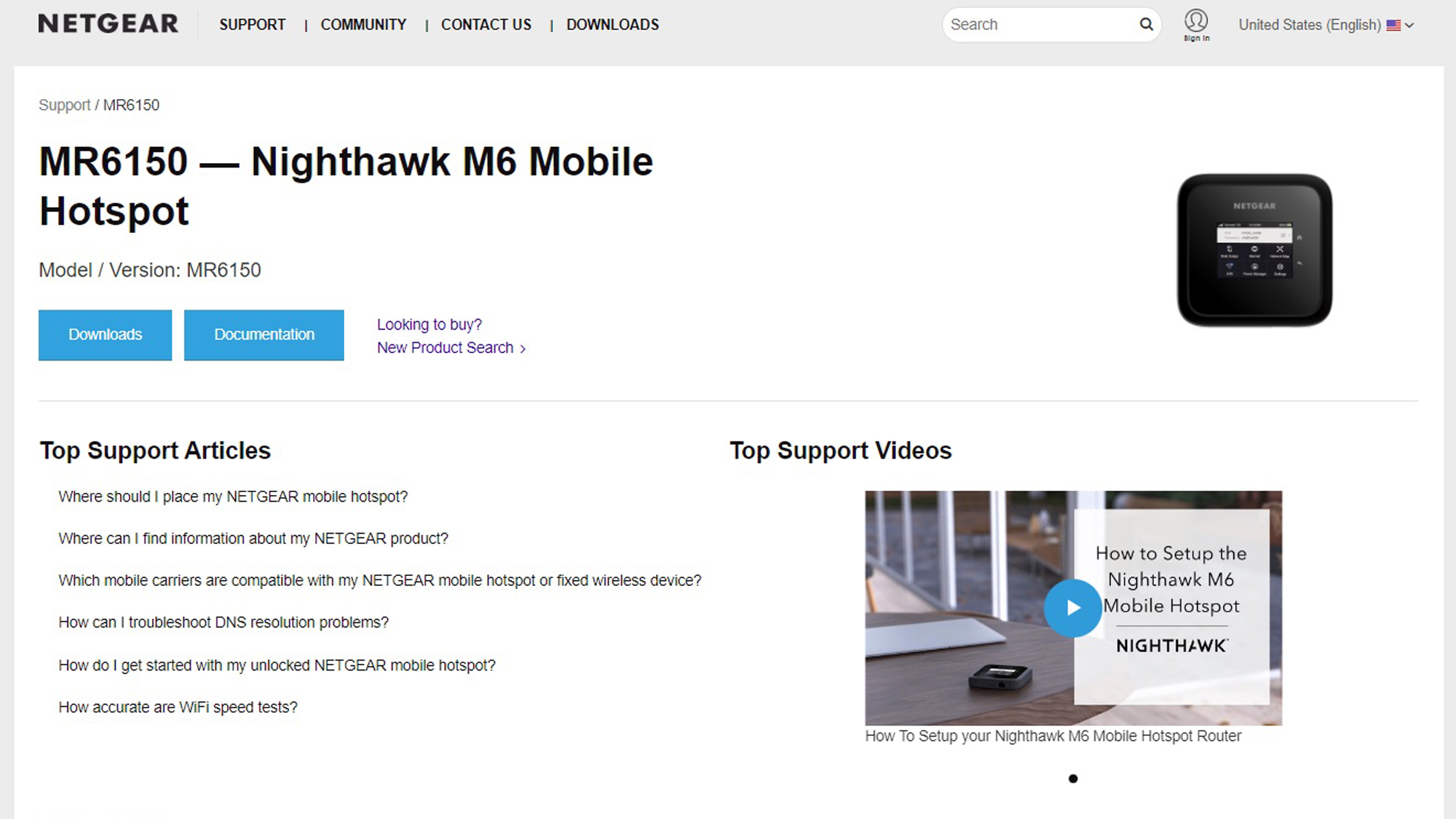
Netgear has several useful online support resources for the M6, including a start-up video and articles on getting the most out of the device.
Netgear Nighthawk M6 Mobile Hotspot review: Verdict
With the ability to grab a data signal from a 4G or 5G mobile network and send out strong Wi-Fi 6 transmissions, the Netgear M6 Mobile Hotspot has several ways to help you stay online regardless of where you are. Perfect for everything from a day at the beach to avoiding hotel Wi-Fi, the M6 is versatile enough to also act as an emergency internet connection at home when your broadband fails.
A bit big, heavy and expensive, the $800 M6 has something most hotspots lack: a pair of antenna ports for extending its range. While it can provide the data needed for a 24/7 online lifestyle, its use of Sub-6 frequencies limits the M6 to roughly 4G LTE speeds. Another hotspot like the Inseego MiFi M2100 5GUW can raise the performance bar while costing half as much but the Netgear M6 Mobile Hotspot comes from a trusted brand in the networking business.
Brian Nadel is a freelance writer and editor who specializes in technology reporting and reviewing. He works out of the suburban New York City area and has covered topics from nuclear power plants and Wi-Fi routers to cars and tablets. The former editor-in-chief of Mobile Computing and Communications, Nadel is the recipient of the TransPacific Writing Award.


